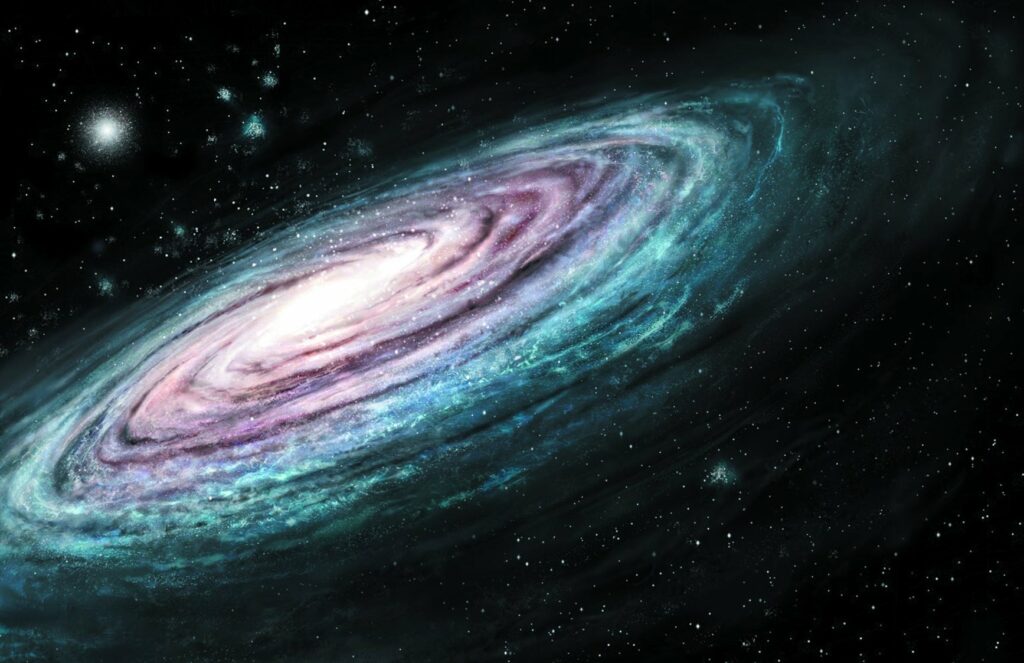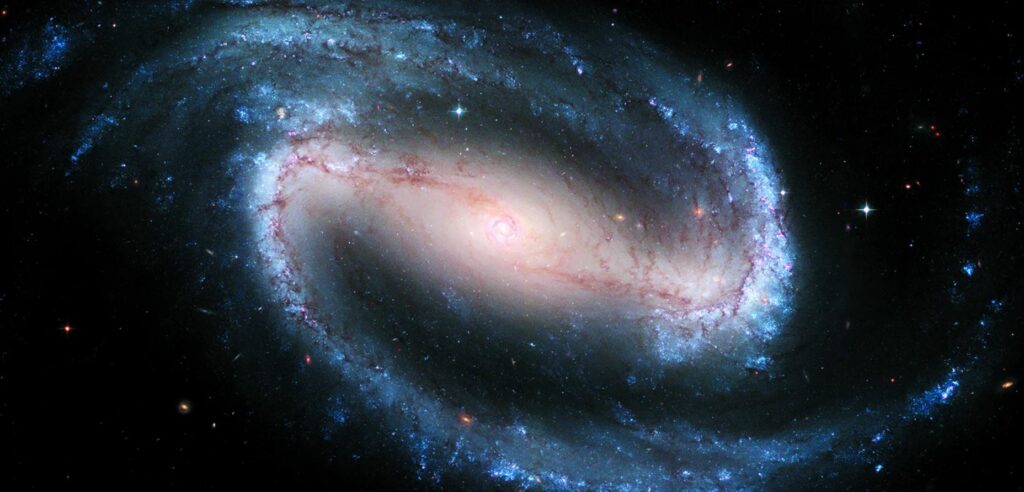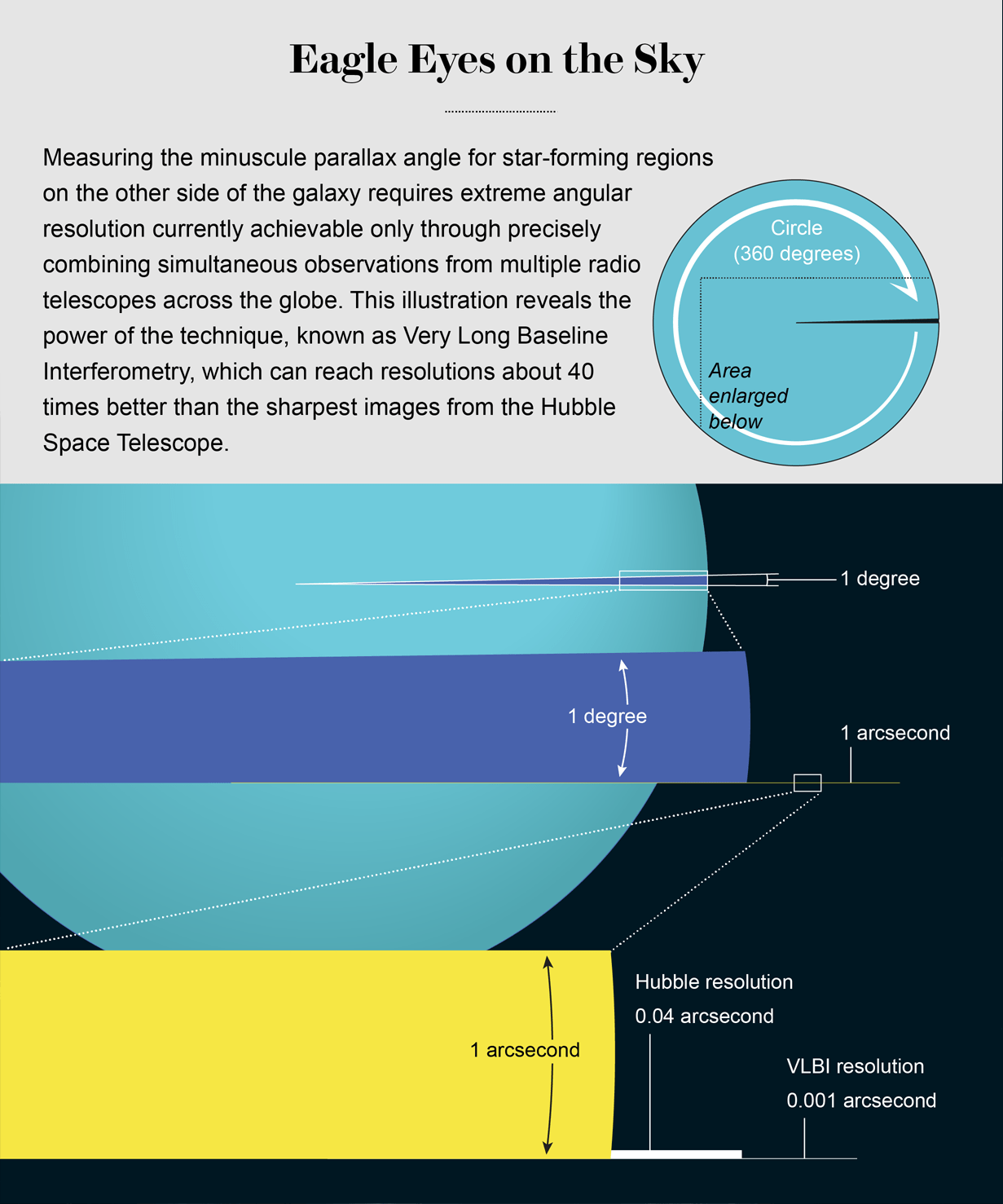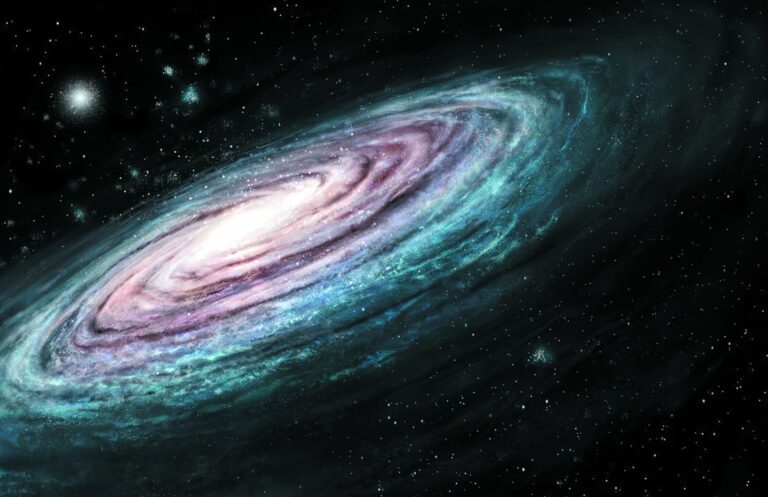A New Map of the Milky Way
High-resolution surveys chart the spiral structure of the galaxy and the location of our solar system

Hundreds of years ago explorers sailed across oceans and traversed uncharted continents to map Earth, and in the past half a century space probes have photographed most of our solar system. Yet as well as we have come to know our astronomical backyard, our image of the larger neighborhood—our Milky Way galaxy—is blurry. The reason is obvious: we cannot get outside it to take a peek. Imagine sending a spacecraft on a multimillion-year journey to go beyond our galaxy, look back and snap a picture: clearly impractical. We are left with many open questions about our cosmic home, such as how many spiral arms the galaxy has, whether the large structure closest to the sun counts as an arm and where in the galaxy our solar system lies.
Recent efforts, however, have begun to map the Milky Way from the inside out, allowing us to assemble an accurate snapshot of its structure for the first time. This emerging vista is the result of several large projects involving advanced radio and optical telescopes, including our program, the Bar and Spiral Structure Legacy (BeSSeL) Survey. For this effort, we were granted an unprecedented amount of observing time—5,000 hours—on the Very Long Baseline Array, a system operated by the National Radio Astronomy Observatory and funded by the National Science Foundation.
Our initial results offer a new and improved view of the Milky Way. In addition to gaining a better understanding of what the Milky Way looks like, we are starting to clarify why galaxies such as ours exhibit spiral structure and how our astronomical home fits into the universe as a whole.
THE COSMIC NEIGHBORHOOD
In the early 1800s William Parsons, the third Earl of Rosse, built a 72-inch telescope—huge for its time. He observed and drew what we now call the Whirlpool Galaxy, which clearly had a spiral pattern. Without knowledge about how far away it was or about the scale of the Milky Way, however, it was unclear whether the Whirlpool was a small structure inside our galaxy or a large nebula similar to it. Debate on these points continued into the early 1900s, until Edwin Hubble, using a technique developed by Henrietta Leavitt to measure the distance to bright stars, showed that the Whirlpool and similar spirals were far outside the Milky Way. This revelation upended the notion that the Milky Way might encompass the entire universe.
Astronomers figured out that we live in a spiral galaxy by measuring the motions of gas throughout the disk—the large, pancake-shaped region that makes up the main body of the Milky Way. Spirals, along with rounded ellipticals, are common types of galaxies. The nearby spirals NGC 1300 and Messier 101 (M101) provide good examples of how the Milky Way might look from afar. NGC 1300 has a bright, linear structure in its center, which astronomers call a bar, and two bluish spiral arms that start at the ends of the bar and wend slowly outward as they encircle it. Bars are seen in the majority of spiral galaxies and are thought to form from gravitational instabilities in a galaxy’s dense disk. In turn, the stirring action of the rotating central bar may give rise to spiral arms. (Other processes—such as instabilities associated with large mass concentrations inside a disk or gravitational perturbations from nearby galaxies—can also lead to arms.) Spiral arms tend to glow in blue light, which comes from gigantic stellar nurseries where massive stars are forming. M101, the other potential Milky Way match, is known as the Pinwheel Galaxy; although it lacks the bright bar of NGC 1300, it boasts more spiral arms.

Astronomers have long thought that the Milky Way has characteristics of both these galaxies. It probably has a significant bar as seen in NGC 1300, as well as multiple spiral arms as in M101. Beyond these basic conclusions there is considerable debate. Infrared observations made more than a decade ago with the Spitzer Space Telescope have suggested that the galaxy might have only two spiral arms. But radio-wavelength observations of atomic hydrogen and carbon monoxide, which are concentrated in the spiral arms of other galaxies, indicate that the Milky Way has four arms. Additionally, astronomers have debated how far the sun is from the center of the galaxy and how high it sits above the Milky Way’s midplane—the central plane of the disk.
Nearly 70 years ago scientists calculated the distances to some nearby luminous blue stars. Plotting these points on a map revealed segments of three nearby spiral arms, which we call the Sagittarius, Local and Perseus arms. Around the same time, starting in the 1950s, radio astronomers observed atomic hydrogen gas, which releases a telltale light signature at a wavelength of 21 centimeters. When this gas is moving relative to Earth, the frequency of this atomic hydrogen signature shifts because of the Doppler phenomenon, allowing astronomers to measure the velocity of the gas to provide clues to its location in the galaxy. Using such measurements, galactic cartographers employ a convenient coordinate system for our Milky Way as viewed from the sun: by analogy to Earth’s longitude and latitude, galactic longitude (l) is zero toward the galactic center and increases along the “equatorial” plane of the Milky Way as viewed from the Northern Hemisphere; galactic latitude (b) denotes the angle perpendicular to the plane. So-called longitude-velocity plots of 21-centimeter light signatures from hydrogen gas (and later from carbon monoxide) revealed continuous arcs of emission that very likely trace spiral arms. This mapping method, however, is plagued by ambiguities and lacks the accuracy necessary to clearly reveal the galaxy’s spiral structure.
A NEW VIEW
One reason that we know so little about the Milky Way is that the galaxy contains an enormous amount of dust. Dust absorbs optical light efficiently, so along most lines of sight through the disk, we cannot see very far—dust is blocking the view. Another reason is the Milky Way’s mind-numbing vastness. Light from stars on the other side of the galaxy takes more than 50,000 years to reach Earth. Such distances make it hard to even sort out which stars are near and which are far away.
New telescopes operating at optical wavelengths in space and at radio wavelengths across the globe are now making great strides toward answering our questions about the Milky Way. The Gaia mission, launched in 2013, seeks to measure distances to more than a billion stars in the galaxy and will undoubtedly revolutionize our understanding of the different stellar populations involved in the Milky Way’s formation. But because it uses optical light, which is absorbed by interstellar dust grains, Gaia cannot freely probe distant spiral arms. In contrast, radio waves easily pass through dust and allow us to explore the entire disk and map its structure.

Two major projects now mapping the Milky Way use a technique in radio astronomy called very long baseline interferometry (VLBI). The VERA (VLBI Exploration of Radio Astrometry) project operates four radio telescopes spanning Japanese territory from the north of the country (Mizusawa) to its southernmost (Ishigaki) and easternmost (Ogasawara) islands. And the BeSSeL Survey uses the Very Long Baseline Array, which includes 10 telescopes and spans much of the Western Hemisphere, from Hawaii to New England to St. Croix in the U.S. Virgin Islands. Because their telescopes are separated by nearly the diameter of Earth, these arrays can attain an angular resolution that far surpasses that of any other current telescope at any wavelength. Researchers must observe simultaneously with all the telescopes and synchronize the data recorded on computer disks at each site with the best atomic clocks. They then ship the recorded data to a special computer that cross-correlates the signals among the telescopes. After some calibrations, the result is a digital image of what we would see if our eyes were sensitive to radio waves and separated by almost the entire width of the planet. Such imagery represents an incredible angular resolution of better than 0.001 second of arc (there are 3,600 seconds of arc in one degree, and the entire celestial sphere is 360 degrees). By comparison, the human eye can resolve structures separated by at best about 40 seconds of arc, and even the Hubble Space Telescope can achieve a resolution of only about 0.04 second of arc.
With VLBI, we can measure the position of a radio-bright star relative to background quasars (bright active black holes at the centers of distant galaxies) with an accuracy approaching 0.00001 second of arc. Making this comparison allows us to survey very great distances by observing the parallax effect, whereby a nearby object seen against a distant background will appear at different positions when viewed from different vantage points. You can simulate this effect by looking at your thumb at arm’s length and alternately closing your left eye and your right eye. Our eyes are separated by several centimeters, so a thumb at an arm’s length will appear to shift by an angle of about six degrees when viewed through one eye and then the other. If one knows the separation of the vantage points and the observed angular shifts, it is easy to calculate the distance. This is the same principle that surveyors use to map cities.
Ideally, to map spiral structure, astronomers should observe young massive stars. These short-lived stars are often associated with intense bouts of stellar formation within spiral arms and are so hot that they ionize the gas around them, causing it to glow in blue light and creating a spiral-arm-tracing beacon visible across the cosmos. But trapped within the Milky Way’s dusty disk, we cannot easily observe such stars throughout our own galaxy. Fortunately, molecules of water and methyl alcohol just outside the regions ionized by these hot stars can be very bright radio sources because they emit natural “maser” emission that is barely attenuated by galactic dust. The word “maser” is an acronym for “microwave amplification by stimulated emission of radiation,” and this radiation is the radio analogue of an optical-light laser. In astrophysical settings, maser emission comes from solar system–scale clouds of gas whose mass is comparable to that of Jupiter. What we see in radio images are extremely bright “spots” that are nearly ideal targets for parallax measurements.

THE UPDATED PICTURE
Between the BeSSeL Survey and the VERA project, astronomers have amassed about 200 parallax-based distance measurements for young hot stars across large regions of the Milky Way. These data, which give us good coverage of about one third of the Milky Way, reveal four arms that are continuous over great distances.
The map also shows that the sun is very close to a fifth feature called the Local arm, which seems to be an isolated fragment of a spiral arm. Previously this fragment had been called the Orion or Local spur, suggesting a minor structure similar to smaller appendages seen branching off spiral arms in other galaxies. This “spur” interpretation is probably incorrect, however. In our data, this fragment appears to be an orphan segment of an arm that wraps around less than a quarter of the Milky Way. Over its short length, though, it has amounts of massive star formation comparable to what we see in a similar length of the nearby Perseus arm. Interestingly, some astronomers have thought the Perseus arm to be one of the two dominant arms (the other is the Scutum-Centaurus–Outer-Scutum-Centaurus arm) in the Milky Way. We find, however, that massive star formation decreases significantly as the arm wends inward away from the sun, suggesting that it would not appear as a very prominent arm to an external observer.
By using the three-dimensional locations of our massive young stars and modeling the measured motions, we can estimate values for fundamental parameters of the Milky Way. We find that the distance from the sun to the galaxy’s center is 8,150 + 150 parsecs (or 26,600 light-years). This is smaller than the value of 8,500 parsecs recommended decades ago by the International Astronomical Union. Also, we find that the Milky Way is spinning at 236 kilometers per second, which is about eight times the speed at which Earth orbits the sun. Based on these parameter values, we find that the sun circles the Milky Way every 212 million years. To put this in perspective, the last time our solar system was in this part of the Milky Way, dinosaurs roamed the planet.
The part of our galaxy interior to our sun has a very thin and nearly flat planar shape. Although this has long been known, the location of the sun relative to this plane has been controversial. Recently astronomers settled on a value of 25 parsecs (82 light-years) above the plane, but our results strongly disagree with this estimate. By fitting a plane through the locations of massive stars for which we have accurate distances, we determine that the sun is only about six parsecs (20 light-years) above that plane. This distance is only 0.07 percent of the sun’s distance from the plane’s center, meaning it is extremely close to the midplane. We also confirmed previous observations that farther out in the Milky Way the plane starts warping upward on its northern side and downward on its southern side, a bit like a potato chip.
When describing their observations, astronomers divide the Milky Way into quadrants, with our sun at the center. Using that convention, we have traced spiral arms in the first three quadrants. To complete the map in the fourth quadrant, we need observations from the Southern Hemisphere. These are being planned and will be obtained with telescopes across Australia and New Zealand. While awaiting those results, we can extrapolate the known arms into the fourth quadrant by using auxiliary information from observations of atomic hydrogen and molecular carbon monoxide. The architecture revealed by these observations coincides with previously theorized structures named the Norma-Outer, Scutum-Centaurus–Outer-Scutum-Centaurus, Sagittarius-Carina and Perseus arms. We caution, though, that we have only one distance measurement to a star-forming region well beyond the galactic center. The measured location of this region, coupled with its position in galactic longitude-velocity plots of carbon monoxide emission, gives us some confidence in how we connected arms on the far side of the galactic center. We will need more such measurements to be certain of our model, however.
We now have a clearer picture of our cosmic neighborhood. It seems we live in a four-armed spiral galaxy with a bright central bar and a reasonable degree of symmetry. Our sun is located almost exactly in its midplane but far from its center, about two thirds of the way out. In addition to arms that wrap approximately all the way around, the Milky Way has at least one additional arm segment (the Local arm) and probably has numerous spurs. These features make our galaxy appear fairly normal, but it certainly is not typical. About two thirds of spiral galaxies exhibit bars, so in this way the Milky Way is in the majority. Yet its possession of four clearly defined and fairly symmetric spiral arms makes it stand out from most other spiral galaxies, which have fewer, messier arms.
MORE MYSTERIES
Although we have some new answers, we are also left with significant questions. Astronomers are still actively debating how spiral arms arise in the first place. Two competing theories are that gravitational instabilities on the scale of the entire galaxy form long-lasting spiral-wave patterns or that smaller-scale instabilities stretch and amplify over time into arm segments that then link up to form long arms. In the former theory, spiral arms can last for many billions of years, whereas in the latter theory, arms are shorter-lived and new ones emerge many times over a galaxy’s lifetime.
It is also difficult to set an age for the Milky Way because it has no clear birth date. Current thinking is that it gradually coalesced over eons as many smaller protogalaxies that had formed earlier in the history of the universe collided and merged. The Milky Way probably would have been recognizable as a large galaxy about five billion years ago, but it might have looked quite different then because major mergers would have been likely to scramble any existing spiral structure.
Improving on our latest image of the Milky Way will require many more observations and will be facilitated by the next generation of radio telescope arrays capable of VLBI. Such arrays are being planned now and include the Square Kilometer Array in Africa and the Next Generation Very Large Array in North America. Both are giant arrays of radio telescopes projected to span their continents, and they could be fully operational by the end of this decade. By greatly increasing the telescope collecting area compared with that of current arrays, they will allow the detection of much fainter radio emissions from stars and hence will see farther across the Milky Way. Ultimately we hope to definitively trace our galaxy’s large-scale architecture to confirm or reject the competing theories of how its grand, spiraling structure came to be.
Source: ScientificAmerican
Do not forget to share your opinion with us to provide you with the best posts !




0 Comments